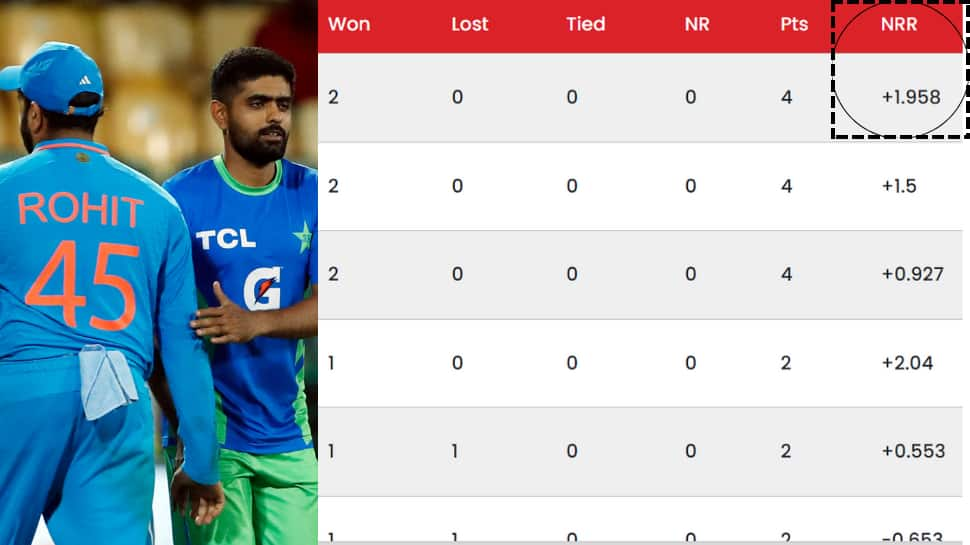The Net Run Rate (NRR) is going to become a hot topic very soon in the ongoing ICC Cricket World Cup 2023. Even after ten matches, the NRR formula is used to determine which team stands at what position. For example, both India and Pakistan have equal number of points after playing two matches, but India are on second and Pakistan on third. New Zealand, with same number of wins in same number of matches, is at the top of the World Cup points table. In this case, what differentiates the teams is the Net Run Rate or NRR.
Also Read | WATCH: Fans Fight At Arun Jaitley Stadium During India Vs Afghanistan ICC Cricket World Cup 2023 Match, Video Goes Viral
The Net Run Rate is going to play a crucial role at the fag end of the tournament with more than four teams having same number of points. But only four can go to the semi-finals. In that scenario, the Net Run Rate willd decide who is playing the semis and who is going home. This is nothing new. Many multinational tournaments in the past in cricket has seen the Net Run Rate formula being used to determine the semi-finalists. It plays a big role in the homegrown T20 competition Indian Premier League (IPL), where sides fight to secure a spot in the playoffs.
In case you fell short of words describing #TeamIndia Captain Rohit Sharma’s record-breaking century, here are some ___#CWC23 | #INDvAFG | #MeninBlue pic.twitter.com/k3PgESTcn1
— BCCI (@BCCI) October 11, 2023
How is Net Run Rate Or NRR calculated?
While the fans discuss Net Run Rate at length, many may not know how it is calculated. Here’s a simple math: the Net Run Rate comes out when you take the average runs per over scored by a team in each game and subtract it with the average runs per over scored against that team in each game.
The average runs scored per over by a team is calculated when you divide the total runs scored in all the matches of the tournament with the total number of overs played by that team.
For example: If India scored 200, 300, 400 in three matches vs Pakistan, England and Australia in 50 overs in each game. Then sum of runs (200+300+400=900) will be divided by total number of overs (150). So 6 is the average runs scored per over by India here.
Now, we will calculate the average runs per over conceded by India. Suppose India conceded 150, 250, 350 in these three matches, where 50 overs were bowled, then the sum of runs conceded (150+250+350=750) will be divided by 150 overs. The result will be 5.
Now, to calculate the NRR, you subtract 5 from 6 and the what you get is 1. Hence, India’s NRR will be 1.
In case, the match is interrupted by rain and the Duckworth-Lewis (DLS) system is used, then the number of overs in an innings and the runs calculated by DRS will be used as parameter. Suppose India scored 300 in 50 overs in an innings but due to rain, the revised target was 240 in 38 overs, then for the purpose of calculating NRR, 240 runs in 38 overs will be taken as runs scored by India in given number of overs.




